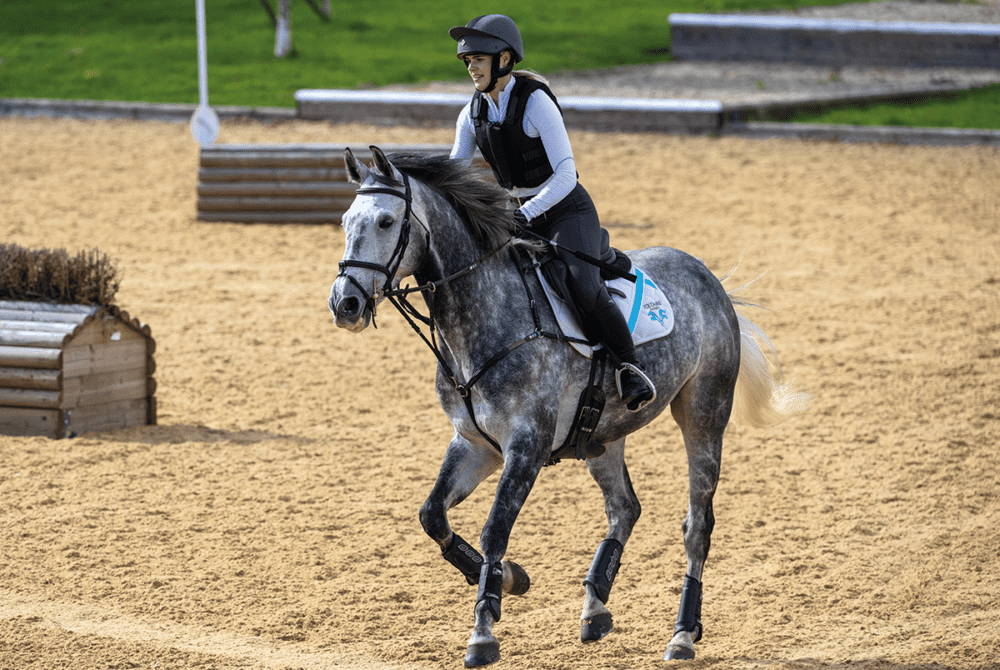Go arena cross-country schooling
Posted 29th November 2022
Want to dip your toe into cross-country but not sure where to start? The solution: start by schooling on a surface. Eventer Felicity Collins shows you how

Riding cross-country is sure to be a resolution for so many riders. Yet, with the idea of perfecting three separate disciplines – one of which requires tackling some rather robust-looking obstacles at speed and on varying going – it can be tricky to know where to start. While dressage can be worked on year-round at home, with the same being said about showjumping, the cross-country phase is arguably the one that causes the most worries – not least because there’s such a small window of the year when conditions suit putting in practice on grass.
This is where schooling on a surface comes into its own. It’s great for preparing you not just for arena eventing – which is a kind of hybrid between cross-country and showjumping that allows keen eventers somewhere to shape up their skills over winter – but for actual cross-country ready to get out come spring, too. Let’s take a look at my golden rules of getting started.
- Do your homework
Before you go, it’s important that you practise the questions that cross-country asks of your horse in the arena at home first. These include…
- skinny fences You can simulate these using poles or fillers with blocks or wings
- arrowheads Similar to a skinny, you can build one of these using purpose-built equipment or a combination of poles and wings or blocks
- corners Replicate one of these at home using a combination of wings and a block. Start narrow and don’t worry too much about the height
- ditches and coffins A water tray makes a good substitute for a ditch, and you can replicate a coffin by building a line with a water tray in the middle with a small upright a few strides before and after
- water Don’t wait for venue hire day to test whether or not your horse likes getting his hooves wet. Make use of puddles, streams and fords at home, first
- flags If you can, use flags on these fences – white on the left and red on the right – so your horse learns to look for them to jump between
By simulating as many cross-country questions as possible at home, you’ll have more hope of focusing your horse on the job on the day. Don’t underestimate how much time it might take to settle him in a massive field or arena filled with obstacles.
- Choose your location
Once you’ve laid the foundations for a successful session, you’ve next got to tackle the ‘where’. It might be tempting to opt for your most local venue but check out the range of fences they’ve got beforehand. There’s no point going if they’ve only got a handful of jumps under 1m.
Your ideal location will have dozens of options for you to jump. Ideally, the majority of them will be straightforward and welcoming – look out for rolltops, logs and anything with a slightly ascending profile. A venue where the jumps are reasonably spaced out will help you maintain your horse’s attention, too.
For more information on how to get started with arena cross-country schooling, check out January Horse&Rider – on sale now!











